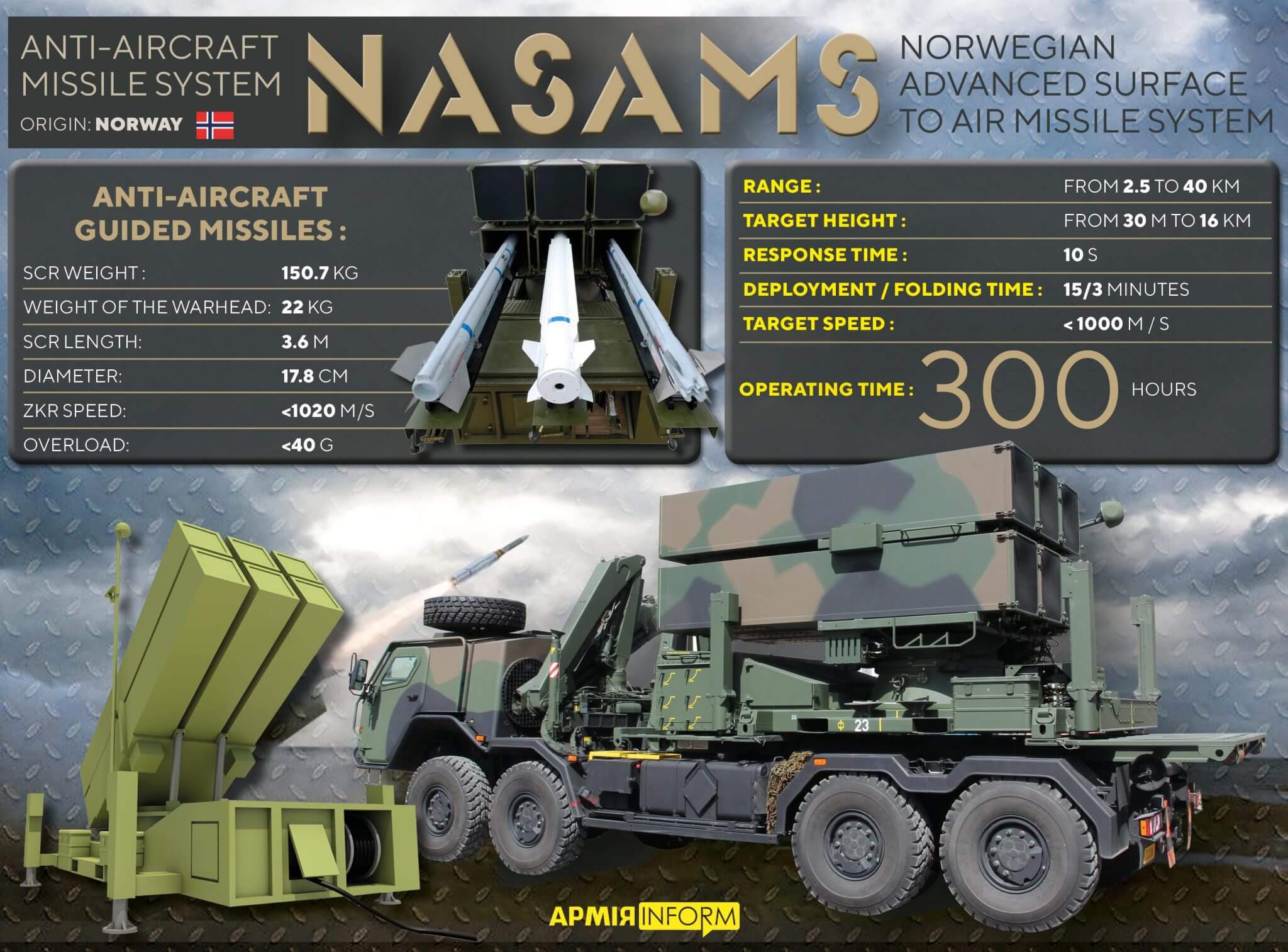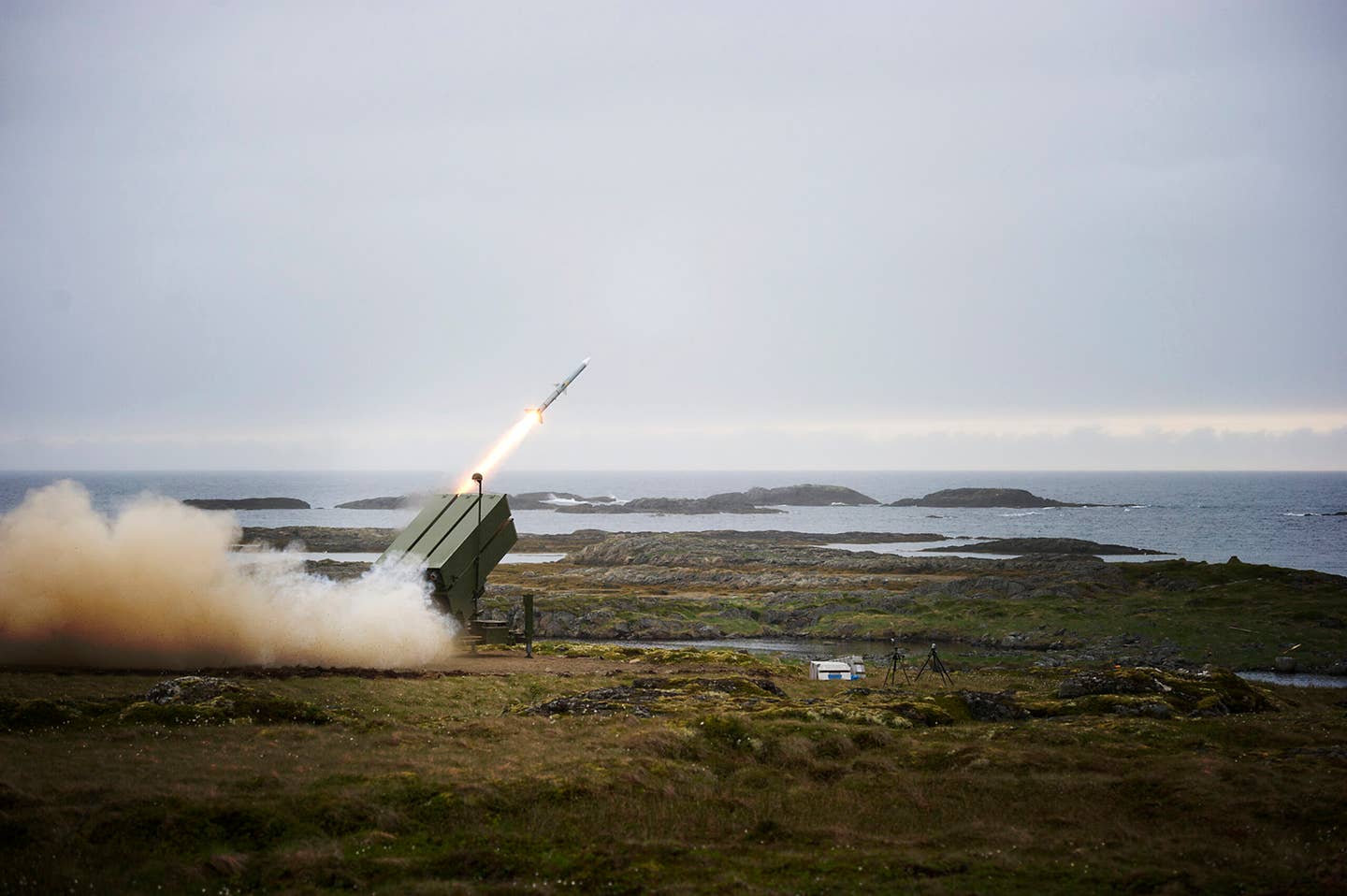The US is exploring ways to provide Ukraine with NASAMS (National Advanced Surface-to-Air Missile Systems) faster, which could be done by transferring the NASAMS deployed in the Middle East to Ukraine.
The US is reportedly working with its allies in the Middle East to move some of their NASAM systems to Ukraine, according to the CEO of Raytheon Technologies, the co-developer of the system.
The target is to provide Ukraine with more NASAM systems in the next three to six months, CEO Greg Hayes told Politico, and the US will then replace those systems with new NASAMS in the Middle East over the next two years.
“There are NASAMS deployed across the Middle East, and some of our NATO allies and we [the US] are actually working with a couple of Middle Eastern countries that currently employ NASAMS and trying to direct those back up to Ukraine,” Hayes said.
Hayes explained that transferring systems from the Middle East would be faster than building them in the US. Just because it takes 24 months to build, it doesn’t mean it’s going to take 24 months to get in [the] country,” he said.
Hayes said it takes two years to build NASAMS due to the lead time needed to procure electronic components and rocket motors.
For any transfer of the air defense systems from the Middle East to Ukraine to actually materialize, it will need approval from the Biden administration.
Raytheon Technologies has declined to divulge the name of the Middle Eastern customers that would send the NASAMS to Ukraine, but as per the records of the Defense Security Cooperation Agency, the countries that have purchased the air defense system include Oman and Qatar.

Oman signed the purchase agreement with Raytheon in 2014 for NASAMS, with delivery in 2016. The US cleared the export of NASAMS to Qatar in 2019. However, the US government notifications did not state the number of systems Oman and Qatar would acquire.
The US has pledged a total of eight NASAMS to Ukraine for defense against Russian missile and drone attacks that are crippling the country’s critical infrastructure.
The first two air defense systems announced as part of the third Ukraine Security Assistance Initiative (USAI) package in July were delivered to Ukraine and deployed in combat in November.
In late August, the US announced its fifth USAI package, which included an additional six NASAMS systems. On November 30, the US Army granted Raytheon Missiles and Defense a $1.2 billion contract to supply these six NASAMS batteries to Ukraine.
The latest contract includes the NASAMS batteries, training, and logistical support for the Ukrainian military and security personnel.
Around 60 Ukrainian personnel have been trained in Norway on two NASAMS, Hayes said. Raytheon co-developed the system with Norway’s Kongsberg Defence & Aerospace. The company has a support facility in the region where it can provide technical support after units are deployed.
It usually takes six months to train on NASAMS, but Ukrainians were trained in 60 days.
NASAMS In Ukraine Very Effective
Overall, NASAMS seems to have been very effective on the ground so far, with US Defense Secretary Lloyd Austin telling reporters in mid-November that the air defense systems initially supplied to Ukraine have enjoyed a 100% success rate in intercepting Russian missiles.
The air defense system uses AIM-120 AMRAAM air-to-air missiles modified for ground launch with an engagement range of around 30 kilometers. It is a point defense system to fend off attacks on high-value targets from drones, helicopters, cruise missiles, and aircraft.
Therefore, even the US uses NASAMs to protect the sensitive airspace around the White House and US Capitol in Washington.

Ukraine is believed to have been provided with the NASAMS-2 variant, which has a Link-16 data link, meaning the system does not require any surveillance radar and can be cued toward the target by an airborne surveillance asset like the E-3 Sentry AWACS, which monitors Ukraine’s airspace.
This significantly distinguishes NASAMS from most air defense systems currently being used by Ukrainian forces that cannot leverage the E-3 capability, which can detect and track Russian cruise missiles shortly after they enter Ukrainian airspace.

Nevertheless, eight NASAMS will not be enough to protect all major cities and infrastructure facilities across Ukraine. Also, NASAMS is a very expensive system, with each NASAMS battery costing $23 million and a single AMRAAM missile worth more than $1.2 million.
Therefore, it does not seem like Ukraine will receive NASAMS in large numbers, and it has probably been acquired to defend only the Ukrainian government and strong command and control centers.
- Contact the author at tanmaykadam700(at)gmail.com
- Follow EurAsian Times on Google News




